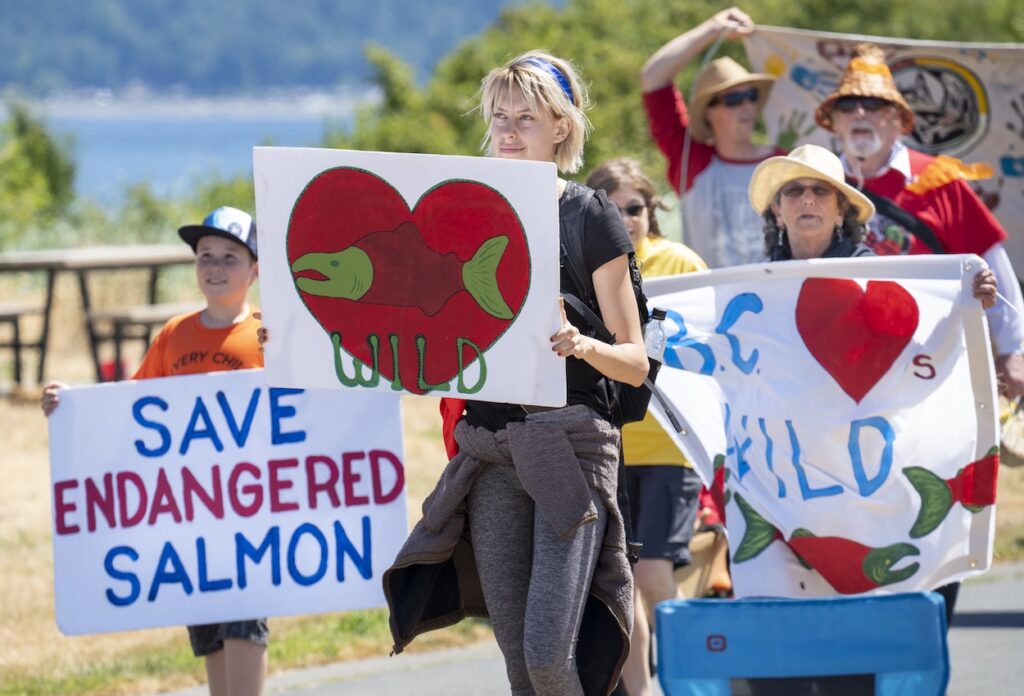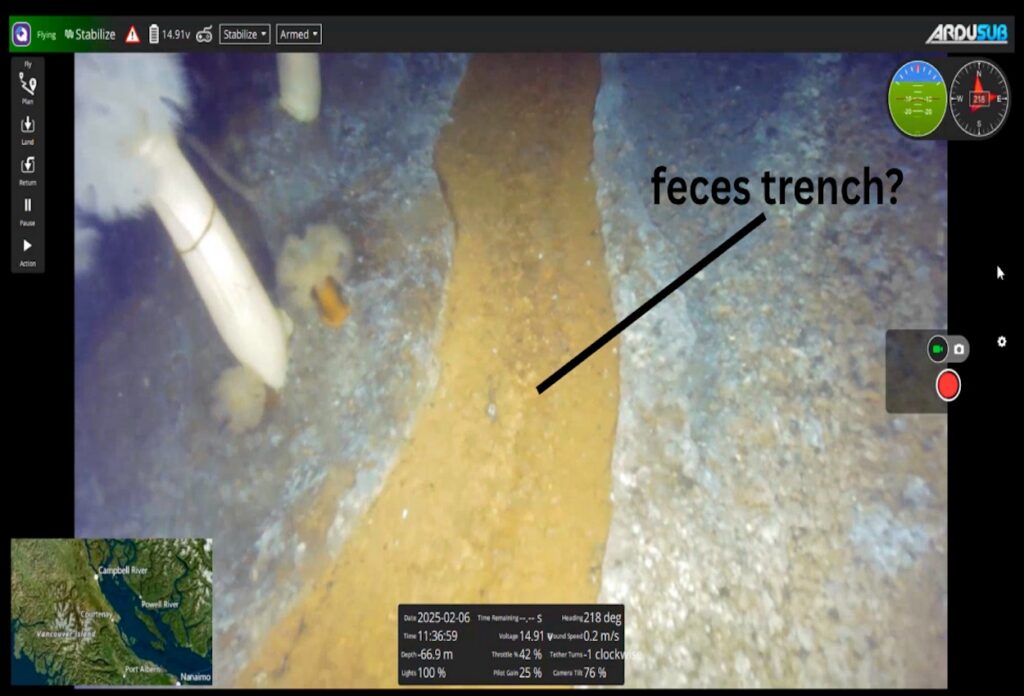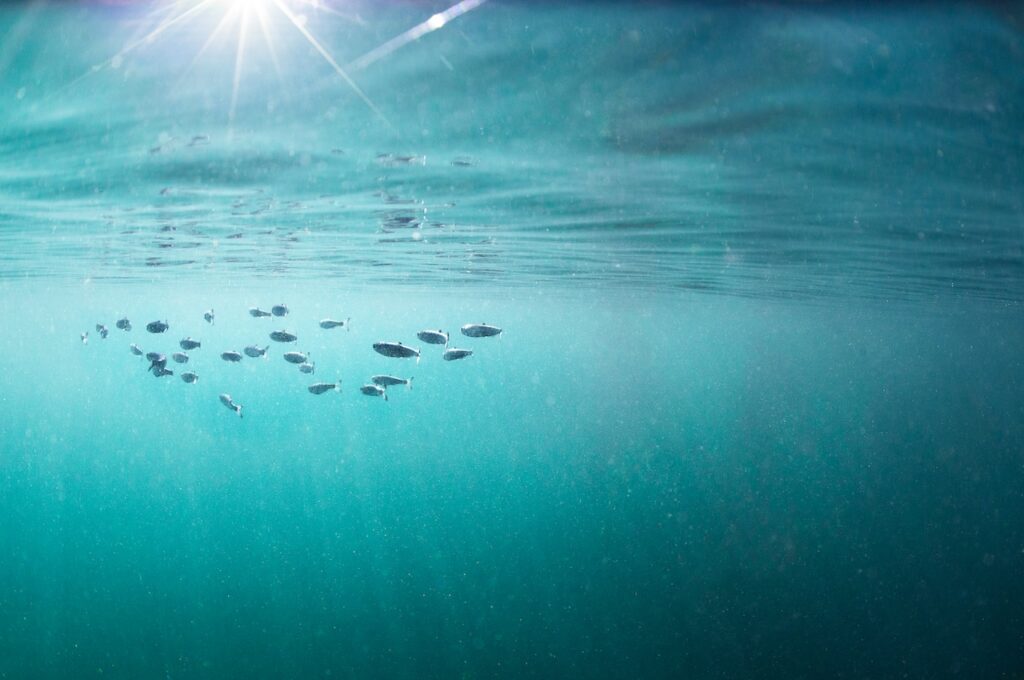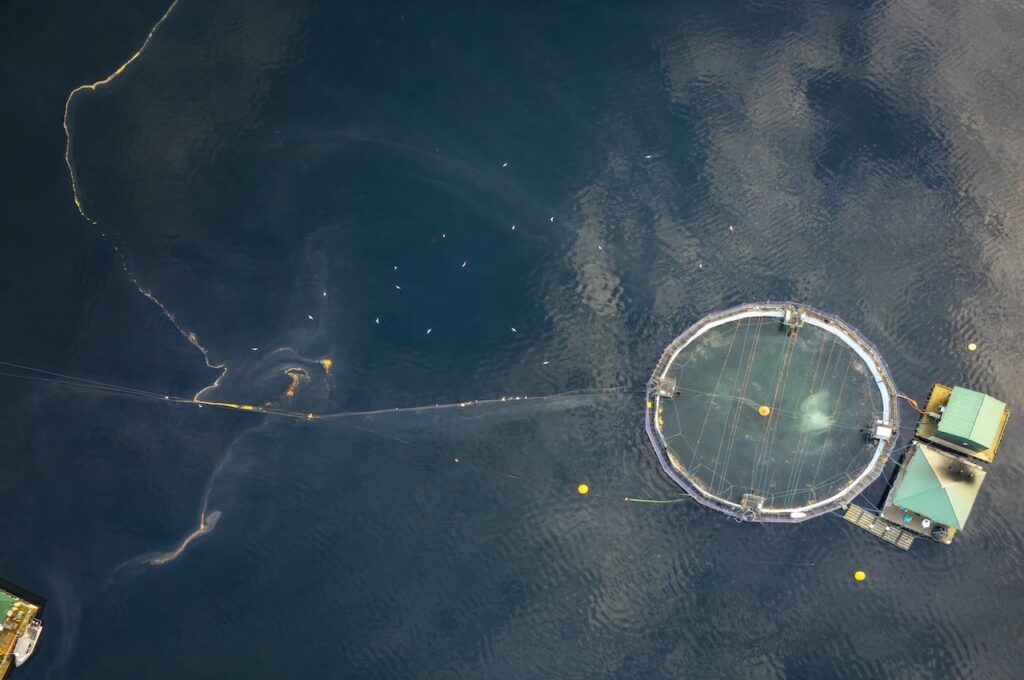(Originally published in November/December 2016 issue of Watershed Sentinel)
As I struggled to hoist myself up onto the monumental stump of an ancient red cedar, I wondered how it had come to this. Why, in 2010, were trees like this being cut down in Clayoquot Sound? A place where valley after valley of ancient forests never ravaged by chainsaws undulates downwards from the snowy peaks, to surf rolling in on mile-long sandy beaches.
Clayoquot Sound covers less than a tenth of Vancouver Island, and is home to the largest swath of unlogged rainforests left—some protected in parks, some open for logging. Although the total area is smaller than the Great Bear Rainforest on the North Coast of BC, the big trees grow more densely in Clayoquot, due to the southern location. There are no intact valleys on Vancouver Island to the south of Clayoquot, nor are there any south of the US border.
Resistance to clear cutting in Clayoquot Sound began in the early 80s, when Tla-o-qui-aht and Ahousaht First Nations joined with Tofino locals and allies far and wide to prevent the logging of Meares Island. A series of blockades began in 1988 to protect the rest of Clayoquot. By the early 90s, there was broad-based public support for the idea of protecting all of Clayoquot Sound.
Plan to log two-thirds of Clayoquot Sound
Back then, I was a conservation representative at the Vancouver Island Commission on Resources and the Environment (CORE) Table—a multi-sector negotiation tasked with developing recommendations towards a Land Use Plan for Vancouver Island. Right in the middle of our year-long deliberations, the BC Government announced plans to log two-thirds of Clayoquot Sound, sparking Clayoquot Summer—the largest act of civil disobedience in Canadian history. Bitter jokes abounded that the core old growth area on Vancouver Island had been removed: we had been CORE’d. As environmentalists, we decided against staging a dramatic walkout—it was too predictable—and opted to remain at the table.
What happened next surprised everybody. Commissioner Stephen Owen put forward a list of ten conditions. If his conditions were not met, he would walk from the table and scuttle the negotiations, putting the government in a terribly embarrassing situation.
One of his demands was the establishment of a blue ribbon science panel to develop promised ‘world-class logging standards’. Government moved quickly to meet his demands, and the Clayoquot Sound Science Panel (SciPan) was established. It contained a good balance of disciplines, with a mix of scientists focussed on conservation and resource extraction.
Hishook-ish-tsawalk—everything is connected
The SciPan was unique in that the co-chair was indigenous—Dr Richard Atleo (Umeek) from Ahousaht First Nations, a respected academic, elder, and hereditary leader. He brought to the discussion the Nuu-chah-nulth concept of hishook-ish-tsawalk—everything is connected.
The fatal flaw of the Science Panel was that there were two questions that needed to be answered: 1) should Clayoquot be logged, and if so, 2) how should it be logged. The decision to log had been made without scientific input, and without looking at the broader regional context (which CORE had been tasked to do). Now the scientists were being asked to figure out how to log these globally rare ancient rain forests without destroying them.
Over a period of two years, five reports were released, the final one containing 170 recommendations. The SciPan recommendations were expected to turn logging on its head. Traditionally, resource managers looked for the best trees to cut, and based logging plans on that. Wildlife, recreationists, and rivers were expected to make due with whatever was leftover—a woefully inadequate way to log. The SciPan recommended planning the set-asides first, then the logging companies could have whatever wasn’t needed to maintain the integrity of the ecosystem.
A new way of logging?
The other major breakthrough of the SciPan was to develop an alternative to clearcut logging. This was called ‘variable retention’ logging. The idea was that within a given cut block, certain trees would be retained—for eagle nests, along stream banks, etc. The amount of trees retained could vary—all the way down to 15%.
However, at the end of the day they were only recommendations and the devil would be in the details. Nearly a thousand people had been arrested to end the logging of Clayoquot Sound, not to make the logging better. Nonetheless the government created a Science Panel Implementation Team (SPIT) which began work on logging plans for the Sound.
That took ten years, and by the time the plans were announced in 2006, the political landscape had changed entirely. Logging giant Macmillan Bloedel no longer existed, and that tenure was held by local First Nations. The government was no longer progressive, and very much wanted to get fibre flowing out of Clayoquot again. The annual cuts of the early nineties—around a million cubic metres a year—had been reduced to tens of thousands.
There were several attempts to begin logging the intact valleys, but a coalition of groups including the Wilderness Committee was able to head that off. Ecotrust Canada tried to help Iisaak survive by financing a ramp-up of logging to new heights. Barges loaded with raw logs leaving the Sound became a common sight again, and locals became very concerned.
Some members of the SciPan had argued from the get-go that Clayoquot Sound was not a large enough area to sustain industrial scale logging. Political realities further constrained the logging land base. There are intact valleys on the books for logging, but companies have steered clear of those areas for fear of sparking another Clayoquot Summer. So they continue to hollow out the fragments of old growth left behind from the 80s.
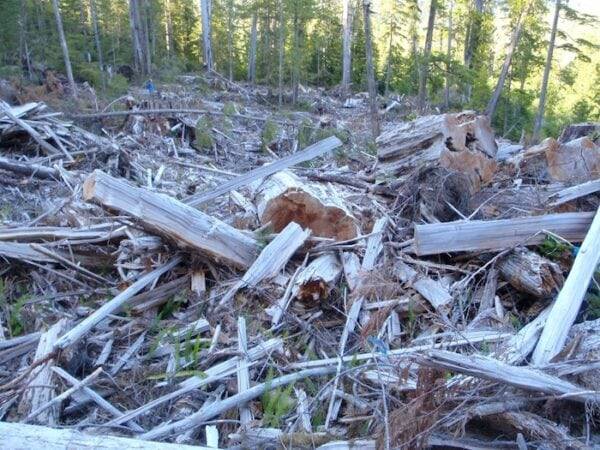
Government wasted millions of dollars
In 2010 my partner Bonny & I hiked up into some SciPan cut blocks to check them out (that tine blue speck in top left of photo is me). What I saw horrified me. The cutting was being done by contractors and it wasn’t pretty. The scene I surveyed from atop that stump looked a lot like the clear cuts of the bad old days—just smaller. Many of the ancient cedars had shattered when felled, and there was an incredible amount of waste wood. There had been a spill of oil, and we were concerned that oily water in the ditch would make it’s way to a nearby salmon stream. I remember thinking, if this is what hishook-ish-tsawalk looks like, then I would have a hard time explaining what that means to the many animals who used to live here.
In October 2015, the hereditary chiefs of Ahousaht announced an end to industrial scale logging in their territories, stating “For the past 20 years the two main Tree Farm Licenses in the area…have been accessing old growth timber within the increasingly constrained areas of Clayoquot Sound often creating conflicts with Ahousaht traditional values and highly prized internationally recognized conservation interests.” Their goal is to “protect a traditional way of life while supporting a continued transition to a modern diversified sustainable economy”.
It’s a shame our governments wasted so many millions of dollars on the Science Panel. That money could have been used to learn how to log second growth in a manner which restores ecosystems to their former functioning states. In 2016, the Union of BC Municipalities passed a motion to formally oppose old-growth logging on Vancouver Island. Clayoquot Sound is home to one of the world’s finest examples of big tree old growth temperate rainforest—a globally rare ecosystem. Surely we should start here.
Dan Lewis is Executive Director of Clayoquot Action.
